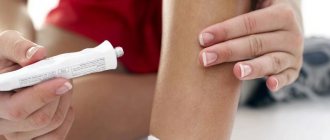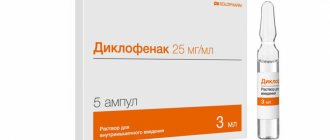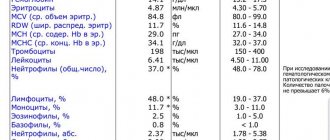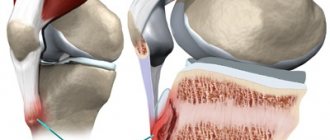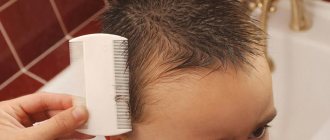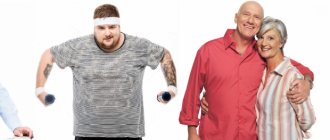One of the most pressing problems in modern orthopedics is flat feet. This defect is characterized by flattening of the foot and a decrease in its arch. In the most severe cases, complete disappearance of the arch of the foot is observed, with the development of valgus deformity of the lower extremities. Depending on the type of deformation, longitudinal, transverse and mixed flat feet are distinguished. In approximately 3% of cases, this defect is hereditary in nature and is caused by congenital weakness of the ligamentous apparatus. Such flat feet are usually detected in childhood and are quite difficult to correct. In adults, the defect often appears as a result of prolonged standing, excess body weight, and wearing uncomfortable shoes. In any case, there is also some congenital weakness of the ligamentous apparatus.
Physiotherapy
One of the main, and when performed correctly, the most effective method of treatment is physical therapy. What principles must be observed? Considering that the cause of foot deformation is the weakening of the ligaments that support the arch, then the main exercises should be aimed at strengthening these ligaments. Medical and sports science have long known that the most effective in this direction are exercises performed in a strength mode. And among strength exercises, static exercises contribute most to hypertrophy and strengthening of ligaments. Let's take a closer look.
Two groups of exercises have the greatest impact on the ligaments involved in the formation of the arch of the foot. The first group is associated with flexion of the foot at the ankle joint . When performing these movements, the back of the foot moves closer to the front surface of the lower leg. Strengthening the ligaments involved in this movement contributes to the formation of the beginning of the arch of the foot. The second group of exercises is aimed at extending the foot at the ankle joint and is the main one in the treatment and prevention of flat feet. This movement is performed when we stand on our toes.
Biomechanics is “lame”. It happens, but it can be fixed
If you follow your daily routine, alternate the load, but your legs still get tired in the evening, it is recommended to consult a specialized doctor - a podiatrist. He diagnoses the feet and the entire musculoskeletal system.
A common problem identified during diagnosis is a suboptimal motor pattern of walking. Our musculoskeletal system works like a well-oiled machine. Only instead of gears, bolts and nuts there are joints, tendons, ligaments. And by analogy, if one part of a mechanism is damaged, the entire device will gradually become loose and fail. So with us, if even the smallest muscle is permanently overstrained, the biomechanics of movement changes. This leads to a chain reaction: damage, “clamps” rise upward, spreading to the entire ODA. The notorious arthrosis, osteochondrosis and other pathologies arise.
Two groups of exercises
Dynamic exercises
To develop ligaments, we perform exercises in dynamic and static modes. We start with a dynamic, high-repetition exercise to warm up the working tissues and prepare them for a more serious load. You can perform 15-20 repetitions of ankle flexion while sitting without load, then do seated extension, also 15-20 repetitions. After completing warm-up approaches, we perform 2-3 working approaches with additional weights. As weights when bending, you can use a sandbag or a thick book placed on the dorsum of the foot. After completing this exercise, we proceed to dynamic extension exercises. This can be standing on your toes while standing on a small stand 5-10 cm high. To enhance the impact, the movements can be performed while standing on one leg. A sitting option is possible. In this case, you can put a weight on your knees or ask your partner to sit down.
Static exercises
As soon as the dynamic part of the exercises is completed, we proceed to the static part. Statics can be performed either immediately as a continuation of the dynamic exercise, or separately, after completing the entire dynamic group. The exercise is performed to failure in one approach. If the duration of the exercise exceeds two minutes, then it is necessary to increase the load with additional weights. The optimal time for performing static stress is from 15 seconds to 2 minutes. After completing a static group of exercises, you need to cool down in the form of a short walk or walking in place. When building a physical therapy complex, we necessarily include both groups of exercises, focusing on the second.
How can those who work on their feet all day help themselves?
Of course, it is important to pay attention to shoes that promote physiological (healthy) movement. It should fix the ankle well - so the toes will not involuntarily clench while holding the shoe, and will not cause overstrain in the muscle chain. The sole of the shoes should not be rigid, so that when moving the foot makes a physiological roll.
It is useful to vary the load on the ankle muscles throughout the day. To do this, it is enough to do 5-10 squats every two hours. In addition, if you have the opportunity to take off your shoes, it’s good to “ride” from toe to heel and back.
Approximate set of exercises
The following complex can be given as an example.
- Seated foot flexion without weights – 20 reps, 1 set.
- Seated foot curl with weights – 15 reps, 2 sets.
- As a continuation of the second exercise, we immediately switch to static mode after completing the second approach. We hold it to the limit.
- Standing on your toes while standing on two legs on a stand – 20 repetitions, 1 set.
- Repeat the previous exercise, but standing on one leg – 15 repetitions, 2 sets.
- As a continuation of the fifth exercise, we immediately switch to static mode. We stand on the tip of one foot to the limit. Then change legs.
- Calm walking in place - 1 minute.
This complex, lasting 15-20 minutes, will fit perfectly into any daily routine. Exercises are best done in the afternoon. For children, it is advisable to come up with an option in a playful way (take out a bird, a sun, etc.).
"Homework". Strengthening your back, shoulders, legs
The decrease in physical activity caused by the spring lockdown put many people into “sleep mode.” Our body is very adaptive, and if we taught it to indulge in melancholy in front of the TV, it automatically slowed down its metabolism. If the muscles do not receive the proper load, they are actually taken out of play. And then all the consequences that we have already talked about are a harmful chain reaction.
That is why today doctors pay special attention to creating a “home gym”. And podiatrists place special emphasis on exercises to maintain balance. Such training develops not only individual muscle groups, as happens during normal physical activity, but also deep-lying stabilizer muscles. Meanwhile, they are the support for our body.
For full balance training at home, you need a minimum of equipment. For example, you can get a balancing pad.
How often should I exercise?
A very important point is the frequency of the complex. According to physiologists, during the exercises themselves, destruction and weakening of the ligaments occurs. In response to this, the body turns on repair mechanisms and gradually not only restores the ligaments to their previous state, but also achieves some additional hypertrophy and strengthening. This mechanism is called supercompensation. Then, if the achieved results are not supported by the next portion of exercises, the ligaments return to their original state. Our task is to structure the training process so that each workout falls at the supercompensation stage. The ligamentous apparatus is completely restored after maximum load in approximately 7-9 days and remains in the supercompensation phase for 10-16 days. Based on this, we can conclude that the optimal frequency of training will be approximately once every two weeks. But this applies to extreme training that only trained athletes can perform. It is impossible for the average person to achieve such a level of tension during exercise, and the degree of damage to the fibers in the ligamentous apparatus will be much less. Therefore, to achieve the effect, training must be done more often.
Alternatively, the diagram could look like this. While the volume of loads is insignificant, we perform a set of exercises every day. As the load increases, we switch to three times a week. As soon as the tension becomes extreme, we move on to one workout per week or even two weeks. A good criterion for choosing the right frequency is to improve results and increase loads in each workout. Otherwise, it is better to reconsider the training scheme.
In the case of childhood flat feet, the criteria will be different; here you need to focus on the degree of effort of the child and his age. It is best, of course, to trust a competent physical therapy instructor who will select an individual training regimen for the child, teach the correct exercise technique and motivate the child.
Working from home?
An additional risk is that our home “office” is rarely equipped to code. So, due to the lack of an ergonomic desk, sitting at home at the computer, we often stretch our necks forward. This pose creates additional stress on the spine. ODA specialists provide a clear metaphor. Imagine holding a bowling ball with one hand. Keeping your arm down puts minimal strain on your muscles, but as you carry the ball forward in your hand, your muscles must tighten to hold it. Now it’s easier for us to imagine that when we sit at a table, stretched out towards the monitor, our head, like a bowling ball, creates additional stress on the spine (by the way, the average ball and the head weigh about the same). So, in order to control yourself, doctors recommend retracting your chin. This allows you to keep your head and neck in the most even, vertical position.
Useful video - Treatment of flat feet. Doctor Postnov's gymnastics
Exercises from a standing starting position
Sets of exercises from a standing position allow you to work out the muscle tissue of your feet and legs. The starting position for all movements is the same: legs are placed shoulder-width apart, and hands are placed on the waist. Let's list the exercises that are done while standing.
- Consistent walking on your toes for 3-4 minutes, the same on your heels. Then work on all sides of the foot for 4 minutes each.
- Slowly “roll” your foot from toes to heel 30-40 times.
- Rotate the foot of each leg in turn, first in one direction, then in the other direction 20-25 times. This simple movement strengthens the ankle ligaments and foot muscles.
- Stand on your toes 30-40 times.
- Extend your right leg forward, clench and unclench your toes for 3-4 minutes. Repeat the movement with your left leg.
- “Shift” the weight of your body to the outside of your feet, then stand straight. Repeat the movement at least 30 times.
- While standing, pick up small objects scattered on the floor with your toes.
- Do deep and “incomplete” squats up to 30 times.
- Do the Swallow exercise. With its help, the transverse arch is well strengthened. Focus on your right leg, and take your left leg as far back as possible, lifting it off the floor. Maintain balance by leaning towards your right leg. “Hold” in this position for 10 seconds. Change the position of your legs. With each workout, the amount of time you hold your balance should gradually increase.
Standing exercises are completed with a foot massage. It will reduce pain and swelling. Also, baths with a relaxing effect are useful.
In order for physical therapy to bring maximum benefit, it is better to do it not indoors, but on a natural surface: pebbles, sand, grass.
Daily exercise, using high-quality shoes that fit exactly, regular massage and relaxing baths can significantly reduce the progression of the disease. With their help, muscles and ligaments are strengthened, pain and discomfort are reduced. In the initial stages of the pathology, therapeutic exercises can completely relieve the symptoms of flat feet.
Exercise therapy for transverse flatfoot in adolescents
Transverse flatfoot occurs in adolescents when the metatarsal bones spread outward, leaving the forefoot flat and wide. One of the toes begins to rise above the others, and three of the five toes have a hammer-like appearance. This type of flatfoot is difficult to treat. In patients with longitudinal-transverse flatfoot, the distribution of load between the ligamentous apparatus and the plantar aponeurosis is disrupted. Early stages of development of flat feet are corrected in a hospital and at home; severe stages of flat feet require special treatment using surgery, devices, procedures, drug therapy, and massage.
In addition to conservative and surgical treatment, exercise therapy is used to restore the shape of the foot and consolidate the results after restoring the shape of the foot. Exercise therapy for longitudinal-transverse flatfoot is carried out in combination with massage, the teenager is prescribed to wear special orthopedic insoles, orthoses, depending on the cause of flatfoot, drug therapy and physiotherapeutic procedures are prescribed. For third-degree flatfoot, surgical treatment is prescribed. Recovery after surgery is long and difficult; the patient wears a special plaster boot for about four weeks; the foot bones are fixed with titanium screws. After surgical treatment, after a certain time, the rehabilitation instructor will draw up a lesson plan and select exercise therapy exercises.
